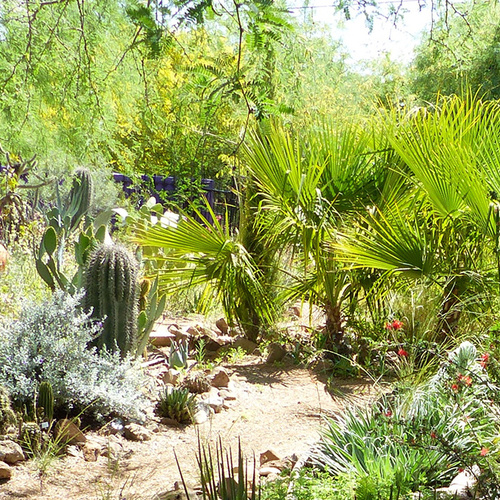
Some plants bring out wide-ranging reactions from people, and palms can have that effect. What may be seen as an elegant lofty tree with a small footprint to one person may, to someone else, be a spindly stick of a tree that provides no shade. To one they may be an exotic focal point in the garden, or another a nonnative that looks out of place. To each their own. But for those of us who perhaps did not grow up with a palm on every street corner, the tropical feel of rustling fronds swaying overhead is a holy grail that we would not want to be without.
The Southwest, with so many climate zones and microclimates, is rich with opportunities to experiment with palm species and hybrids. Even many of our cooler zones have a chance of success with the toughest selections. Of course, conditions vary wildly from the California coast to the low and high deserts and the steamy hills of central Texas. Observe what others are having success with, and talk to local experts to help you with your selections.
Out of many dozens of species that are in the running for various regions, here is a handful of my favorite palms that are adaptable to a wide range of conditions.
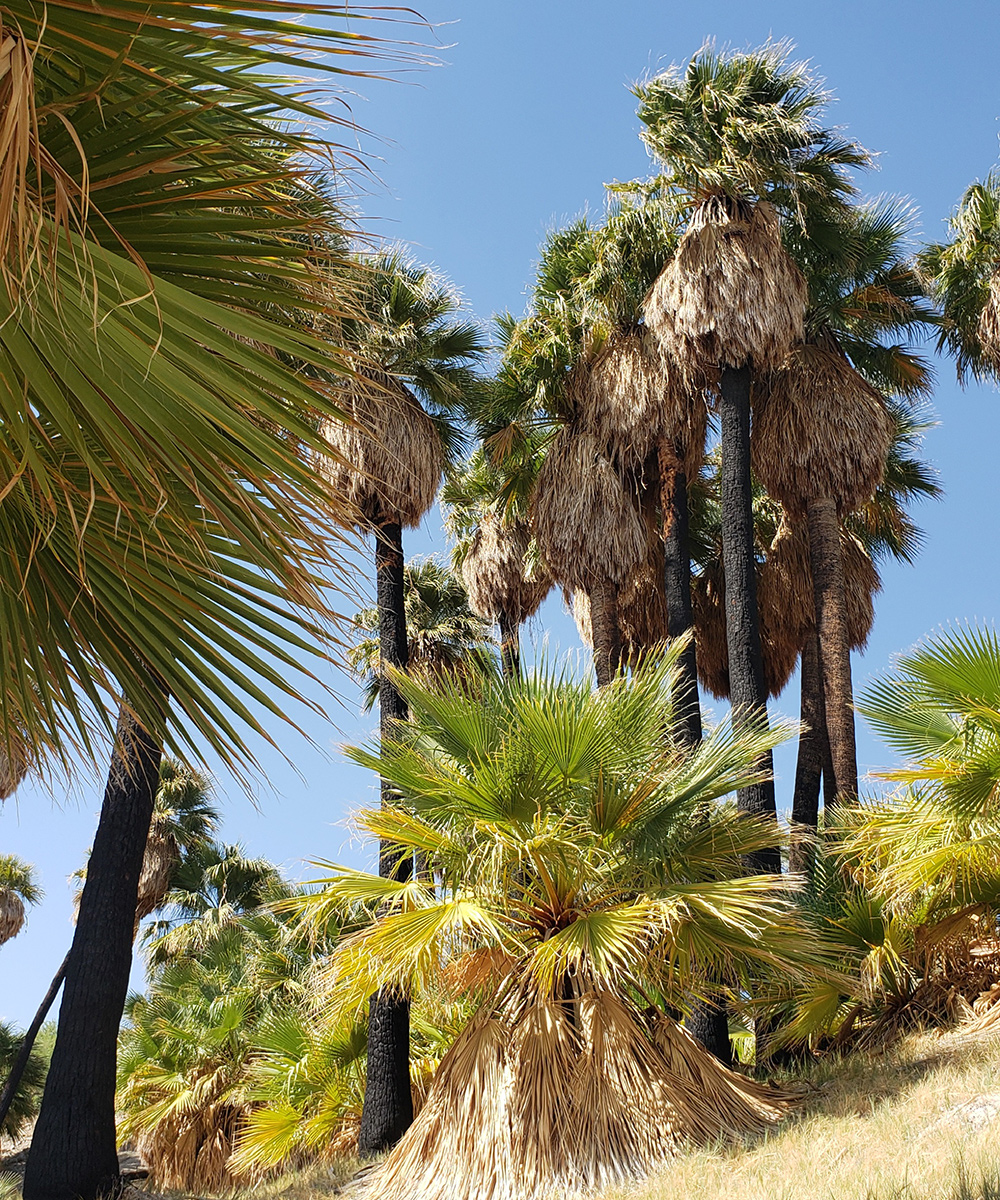
California fan palm
Washingtonia filifera
Zones: 9–11
Size: Up to 50 feet tall and crown up to 12 feet wide
Conditions: Full sun; sandy to loamy soil with good drainage
Water needs: Low to medium
There is one palm species native to the Southwest, and though it is slow growing, it is among the hardiest species and superbly adapted to desert conditions if you can provide periodic water. The California fan palm persists in a handful of unique Mojave Desert locations where faults allow small springs to percolate the surface, notably around Palm Springs, but scattered even across the border to one Arizona location. If you want to go native, this is your palm! Thick trunks are a hallmark of this species, compared to similar species like the slender and ubiquitous Mexican fan palm (Washingtonia robusta, Zones 9–11), which is native not far south of the border in Sonora.

Mexican blue hesper palm
Brahea armata
Zones: 9–11
Size: 25 to 40 feet tall and 6- to 8-foot-wide crown
Conditions: Full sun; rocky soil with good drainage
Water needs: Low to medium
The Mexican blue palm hails from northwest Baja and is similar in proportions to the California fan palm. Young trees flaunt striking silvery blue fan leaves, though these do become more blue-green as the trees mature over the years. Once a trunk develops and flowering maturity is reached, expect some of the most spectacular flowers of any palm, cascading in creamy sprays up to 15 feet long. Like the previous palm, this is very compatible with desert landscapes. Plant near a downspout or catchment basin to easily take advantage of desert rains.
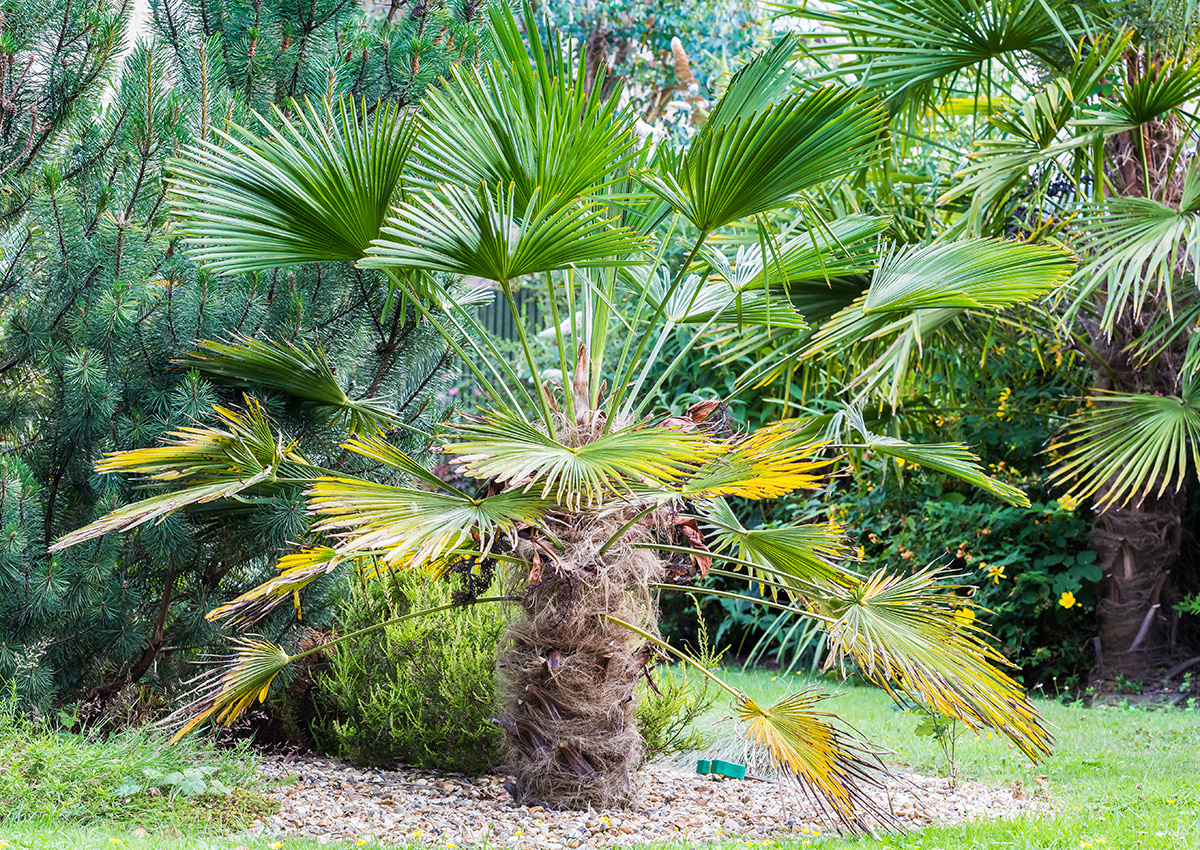
Waggie palm
Trachycarpus wagnerianus
Zones: 7–9
Size: Up to 20 feet tall and 5-foot-wide crown
Conditions: Full sun to partial shade; average, loamy soil with good drainage
Water needs: Medium
A compact miniature palm compared to the previous two, this Asian fan palm is one of several forms of Trachycarpus that can be grown in cooler parts of the southwest. Its smaller fan leaves are just 2 feet wide, evenly spaced and quite tidy in appearance compared to most Trachycarpus. Small groups are refined looking with straight trunks and deep green, pleated leaves. You can expect slow but steady growth with moderate, periodic watering.

Mule palm
× Butiagrus nabonnandii
Zones: 8–10
Size: Up to 30 feet tall and crown up to 20 feet wide
Conditions: Full sun to partial shade; average, loamy soil with good drainage
Water needs: Medium
While the common name of “mule palm” does little to inspire its use, this is a beautiful and adaptable palm that deserves to be planted more widely. As one of the few hardier palms with feather fronds instead of fans, this hybrid between the South American pindo (Butia capitata, Zones 9–11) and queen palm (Syagrus romanzoffiana, Zones 9b–11) combines the best of both. Elegant glossy fronds reminiscent of coconut palms adorn a sturdy trunk, more elegant than the queen palm but faster growing than the pindo, and provide an unmistakable tropical oasis vibe. Most are sterile (thus the name “mule”) and tolerant of cold and drought once established. Allow adequate room for the broad crown of leaves, which provides pleasant shade once it reaches canopy level.

Rock palm
Brahea calcarea syn. B. nitida
Zones: 9–11
Size: Up to 30 feet tall and crown up to 10 feet wide
Conditions: Full sun; average, rocky, or loamy soil with good drainage
Water needs: Low to medium
Several of the hesper palms from Mexico will perform well in the Southwest. This elegant species is less common than some but worth seeking out. Rich green circular fronds stand on unarmed petioles (unusual among fan palms) making care a bit easier. Much slower growing than Mexican fan palm, rock palm will take many years to form a trunk or canopy. They are tolerant of heat, cold, and drought but perform best with routine watering. An excellent “oasis”-type specimen for a desert garden.
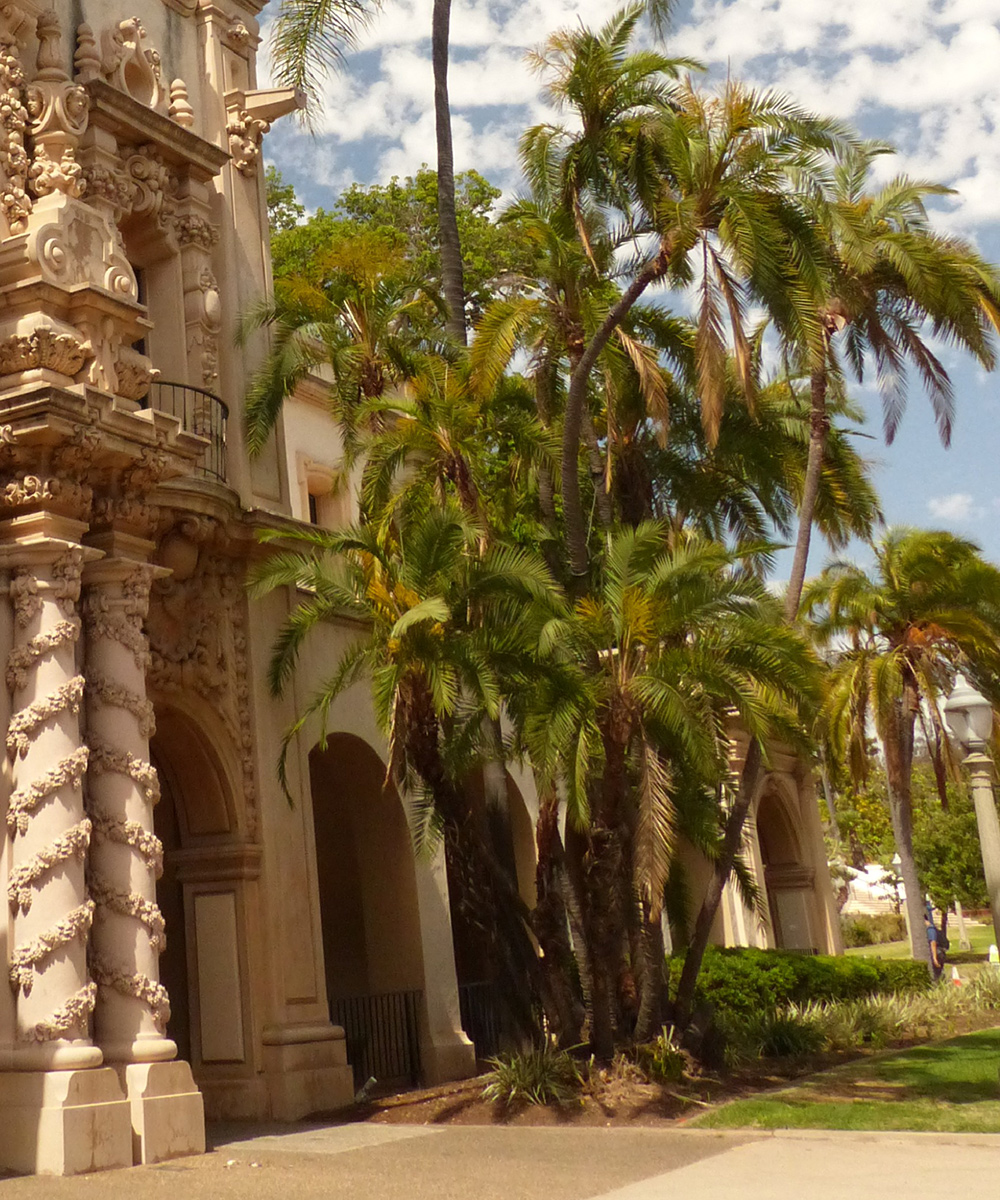
Senegal date palm
Phoenix reclinata
Zones: 9b–11
Size: Up to 30 feet tall; crown can reach 30 feet wide or more, depending on the number and habit of trunks allowed to mature
Conditions: Full sun; sandy, loamy soil with good drainage
Water needs: Low to medium
Several of the Phoenix species are grown in the Southwest with easy success. Though this one is a bit less cold tolerant than the preceding palms, those areas with milder conditions or dependable microclimates may want to give it a try. The Senegal date palm is found throughout much of Africa, tolerating conditions from wet to dry throughout its vast range. The feathery fronds arch gracefully, but note that the leaflets near the trunk are morphed into protective spines. This is a vigorously clustering palm, developing multiple trunks that lean artfully away from each other as they mature, thus requiring a large area for its spreading canopy. Select out preferred suckers at an early age. Not for small yards or tight spaces, one cluster forms a garden haven of its own, tolerating all the heat and sun you can give it and providing dappled shade under its tropical canopy.
Learn more about palms:
Discuss this article or ask gardening questions with a regional gardening expert on the Gardening Answers forum.
And for more Southwest regional reports, click here.
Dan Johnson lives and gardens in Denver, Colorado, and in Tucson, Arizona. He is an associate director of horticulture for the Denver Botanic Gardens.
Photos, except where noted: Dan Johnson
Fine Gardening Recommended Products
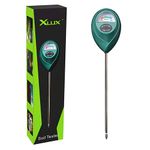
XLUX Soil Moisture Meter
Fine Gardening receives a commission for items purchased through links on this site, including Amazon Associates and other affiliate advertising programs.
– Large and clear dial, including ten scales, plug and read
– Simply insert the moisture meter into soil and you’ll get the test result instantly
– Single probe, less hurts to the roots, doesn’t dig up too much soil after test
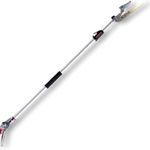
ARS Telescoping Long Reach Pruner
Fine Gardening receives a commission for items purchased through links on this site, including Amazon Associates and other affiliate advertising programs.
Telescopes from 4 to 7′. Cut and Hold (160) Blades. Drop forged blades for unsurpassed long lasting sharpness. Lightweight, 2.3 lbs., for continued use. Perfectly balanced for easy pruning.







